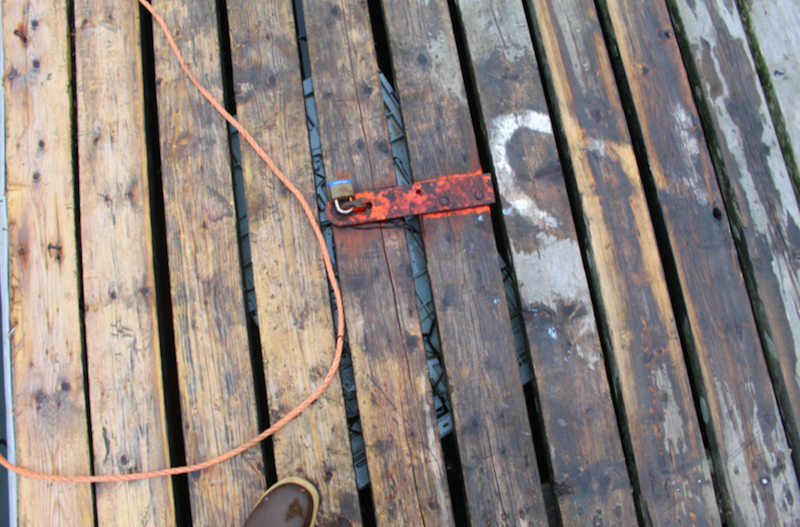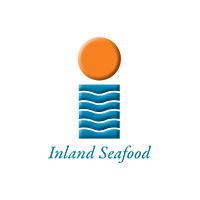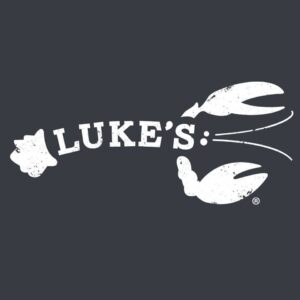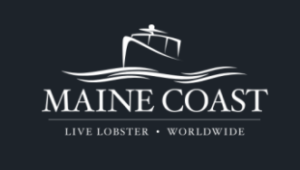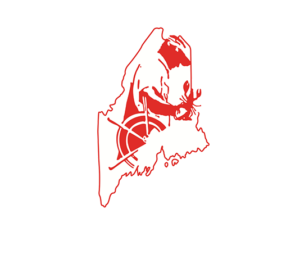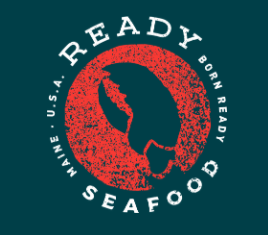Maximizing Value in Maine's Lobster Supply Chain
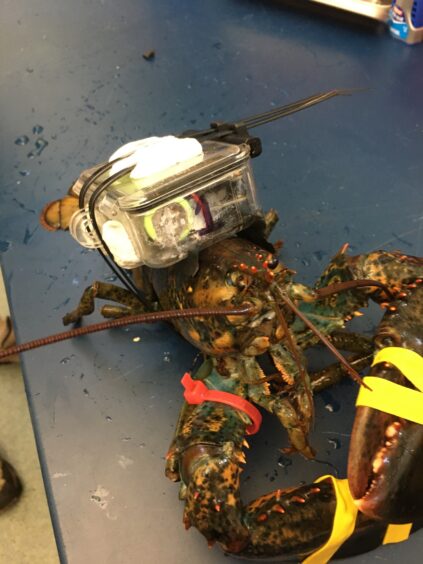
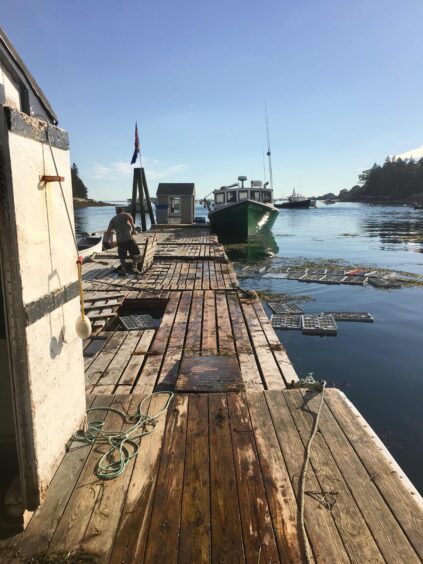
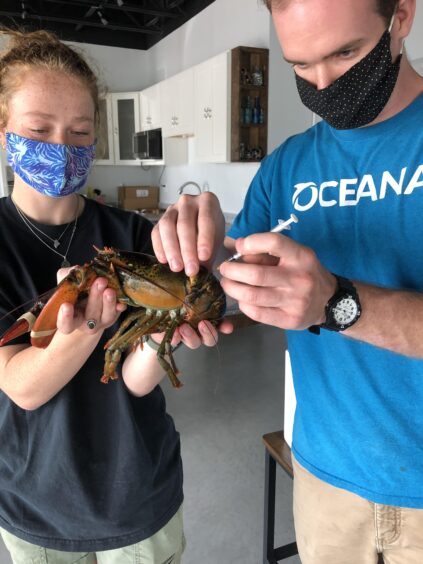
Maine’s lobster supply chain extends from trap to table. Each step of the way, harvesters and dealers strive to deliver their precious live cargo to their ultimate destination in an active condition. But there’s always room for improvement. In fact, there’s much to be gained by improving efficiencies. With the millions of pounds of live lobster passing through the supply chain, even a 1% improvement in survival not only makes a difference to the bottom line, but it contributes to the sustainable use of this valuable resource.
The University of Maine’s Lobster Insitute has assembled a collaborative team of industry stakeholders and researchers, aiming to identify these stress points and provide targeted solutions to the problem.
To maximize the value of Maine lobsters we are undertaking two main research goals.
- Monitoring: We are tracking lobster performance from trap to dealer to quantify the stress points that influence survival.
- Mitigating: We aim to use this information to recommend cost-effective solutions.
We hope our contributions will help the industry improve the long term sustainability of this fishery.
This research is made possible through grants from NOAA’s Saltonstall-Kennedy Program and the University of Maine Research Reinvestment Fund.
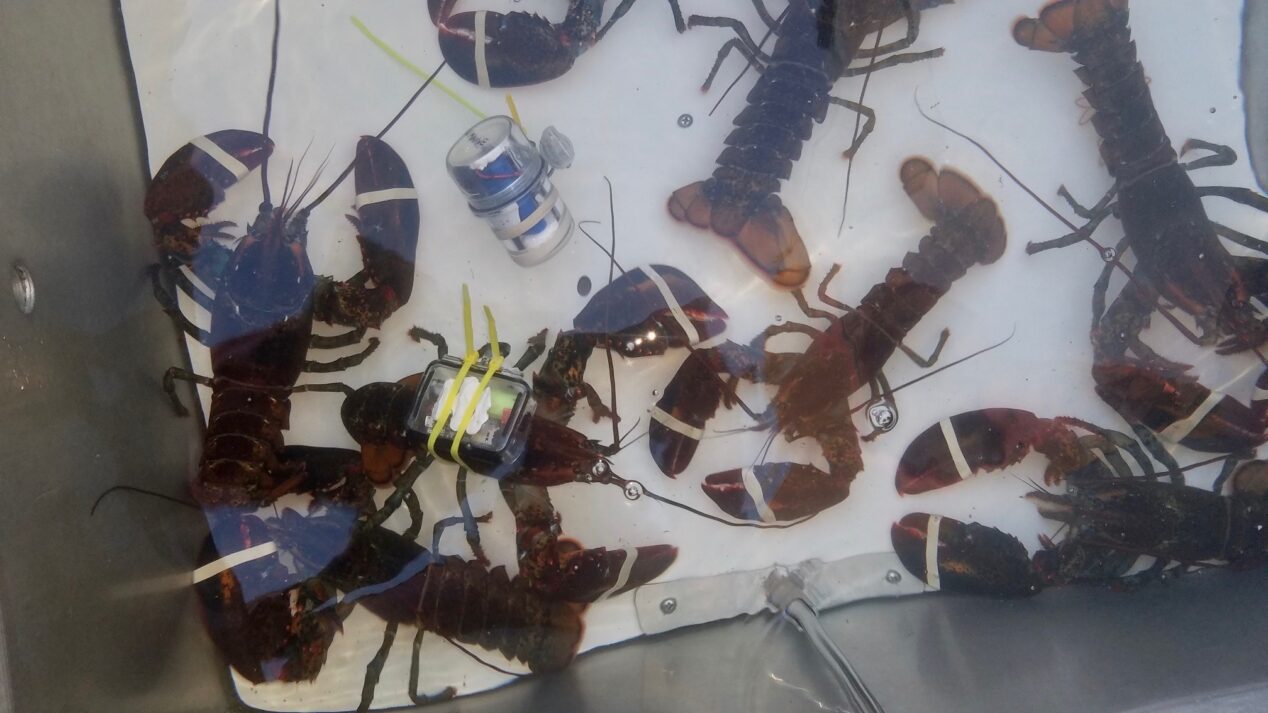
Equipment and Monitoring
To identify stress points in the supply chain, we have a range of equipment to continuously monitor the environmental conditions and the physiological responses of lobsters. As a result of the combined data from the sampling and health assessments we can identify stress points that correlate strongly with survivability.
Mocklobster
The Mocklobster sensor package records temperature, motion, and light throughout the entire supply chain.
Crustacean Heart Activity Tracker
The Crustacean Heart Activity Tracker (C-HAT) is a novel piece of equipment that continuously monitors the heart rate of an individual lobster as it travels through the supply chain. This equipment will be able to correlate the physiological response of the lobster to the environmental conditions.
Seahorse
Seahorses are anchored at participating wharfs and monitor the flow at the dock by continuously monitoring the current speed and direction.
Health Assessment
Once the crate containing the Mocklobster and C-HAT(s) reach our partnered lobster processors and dealers, members of our team inspect each lobster. We note the physical condition, shell quality, vigor, size, and sex of the lobsters. We also take hemolymph (blood) samples to detect different biological markers of stress.
Watch our update from UMaine's Impact Week!
Events
- If you missed our Collaborative Chats Zoom webinar hosted by Maine Sea Grant, Maine Department of Marine Resources, and the Lobster Institute you can view the recorded session here!
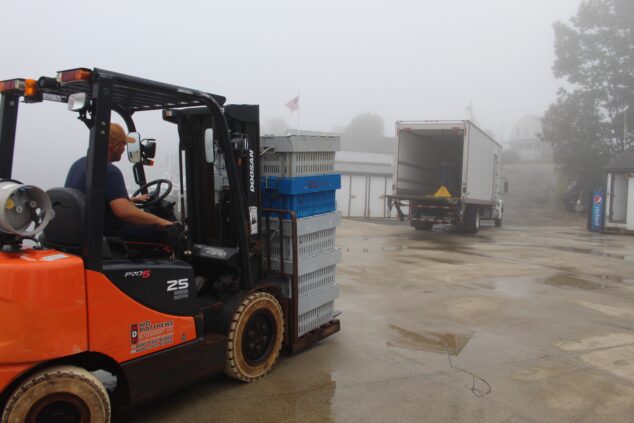
Meet Our Team
- Richard A. Wahle, University of Maine’s School of Marine Science and Lobster Institute
- Damian C. Brady, University of Maine’s School of Marine Sciences and Lobster Institute
- Deborah Bouchard, University of Maine’s Aquaculture Research Institute and Lobster Institute
- Steve Jury, St. Josephs College
- Ben Gutzler, Wells National Estuarine Reserve
- Cassandra Leeman, University of Maine’s School of Marine Science
- Annie Tselikis, Maine Lobster Dealers’ Association
- Patrice McCarron, Maine Lobstermen’s Association
- Curt Brown, Ready Seafood
- Ben McKinney, Luke’s Lobster
- Eric Payne, Inland Seafood
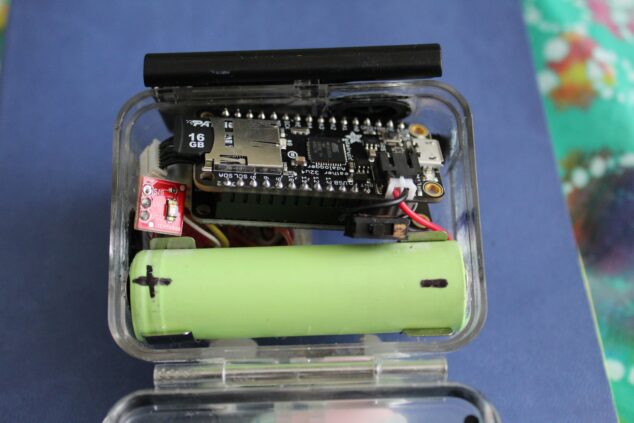
Press & Publications
- Fitbit for lobsters? UMaine tracker could improve lobster survival in supply chain
- MockLobster, FitBugs May Buoy Profits
- Scientists Have Designed an Activity Tracker for Lobsters
- A New Device Tracks Lobsters as They Move Through the Supply Chain
- Activity trackers for lobsters designed for fight against waste

